Our 32 year-old cabin lights are gradually falling prey to old age and cheap manufacturing. Until today, there were four remaining of the original 6 lights. One had been replaced before we bought the boat, and I replace another at some point during our ownership. Although I’m not compulsive about having all the fittings match, it seems to make sense to replace this whole batch with something more up-to-date and energy-efficient. I’ve ordered all new lights with LED elements in them, and also ordered two flex-arm reading lamps, which I installed in the V-berth today.
Prior to today, there was one light in the v-berth (on Ruth’s side) and it wasn’t positioned in a way that made for easy reading. There was no light on my side of the berth. I have always used a flashlight. This is okay, but it doesn’t stay put if I move at all – it rolls around and shines in places where I’m not reading. Due to the ineffective positioning of the existing light, Ruth also used a flashlight to read.
The new lights have bendy necks that are 12 inches long and can pivot every which-way. They made so much more sense than the old short-necked original light. Now we can shine the light on our reading and have it stay where our eyes are looking.
Flex-Arm Reading Light
Installation was straightforward. On Ruth’s side, there was already a hole in the bulk through which the wires fed. I drilled three holes and screw-mounted the fixture over the original installation location.
Old lamp. Cracked and yellowed shade,
intermittent switch, restricted aim.
New lamp installed
And it works. My side of the berth wasn’t quite as easy. I had to splice into the light circuit from the light forward of the clothes locker, then fish the wire through to the berth. Not hard, just needed to develop the right technique with the right tools. Drilled mounting holes and mounted the fixture. Here, the location had a small challenge in that it will share space with the dinghy’s spars and sail. I repositioned the dinghy gear slightly and secured them a little better. This provided enough room to mount the light.
The dinghy gear is held in place with strap eyes
and small stuff. Reorienting the spars and
retying the lines made room for the light.
Add caption After a bit of contorting and suffering with elbows, hands and line-of-sight issues, I managed to secure all the wire supported and hidden. I trimmed off the wire tie tails, and flipped on the light circuit for one last look at my handy work. The port-side light no longer worked. . . Upon rechecking the connections, I discovered that I had neatly cut the positive wire at the same time I trimmed the wire tie. This is my life. This is the way I do things. So I cut off the remainder of the connection, unscrewed the wire tie and cut it off, attached another butt connector to the positive side, and wrestled again to secure the new wire tie with a screw, then carefully trimmed the new wire tie. I checked the light, and it works again. Sigh. . .
I also received the new cabin lamps (just a few minutes ago, actually) and have inspected them. I’m impressed. These are not high-dollar fixtures, but feature a “satin chrome,” finish and seem pretty robust. The lamps are wired with tinned wire – a “marine-use” feature. They are made by GoWISE. The information on the box indicates that they operate on 8-30 volts – which seems like a pretty wide range of voltage to me. Hopefully, the range will be sufficiently flexible to accommodate the 12.4 – 14.4 volts of a boat system. I’ll start installing them in the next day or two.
This photo reminds me of a Pixar film character.
So we’ll see how they do. The flex-arm lamps were $24 each, shipped together (shipping charge was steep, at $20). I found them with this eBay vendor: Alliance Coach-RV sales and service. I doubt we will use the reading lights while under power – with the engine running the voltage is right around 14.4 volts. Automotive-style LEDs aren’t typically very flexible with regards to voltage fluctuations, so hopefully using them with the engine not running will allow them to last without the failure that is attributed to voltage levels that are too high.
The cabin lights were $49 for three – I ordered two sets. Shipping was a little more reasonable at $15, and the eBay vendor is Bovilles.
Life aboard is living large, in a small space. Every boat owner has found ways to make life in that small space easier, more comfortable, more convenient. The idea behind this site is to provide a place where these ideas can be shared amongst the boating community. To participate, send your contribution to SmallBoatProjects at gmail dot com.
Pages
▼
Tuesday, September 3, 2013
Light (For) Reading
Over oaboard s/v Cay of Sea, Rick is upgrading his aging interior lighting fixtures...
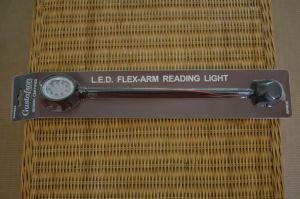
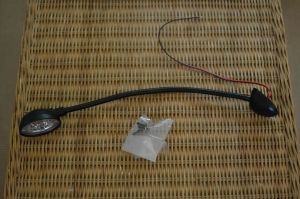
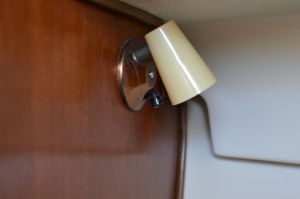
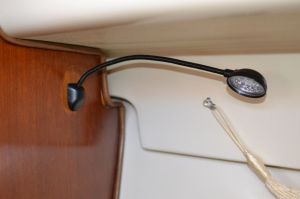
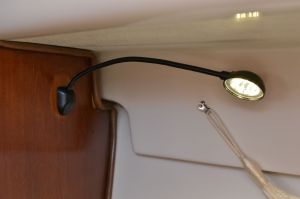
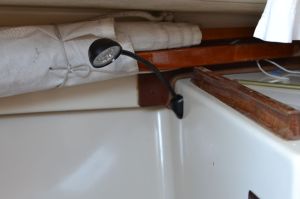
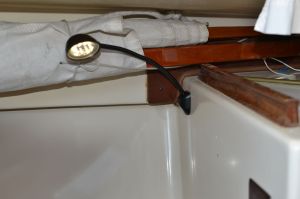
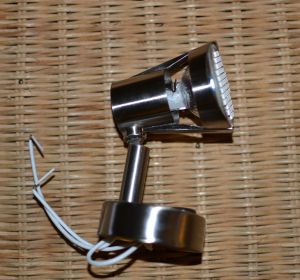
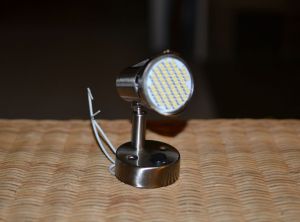

No comments:
Post a Comment